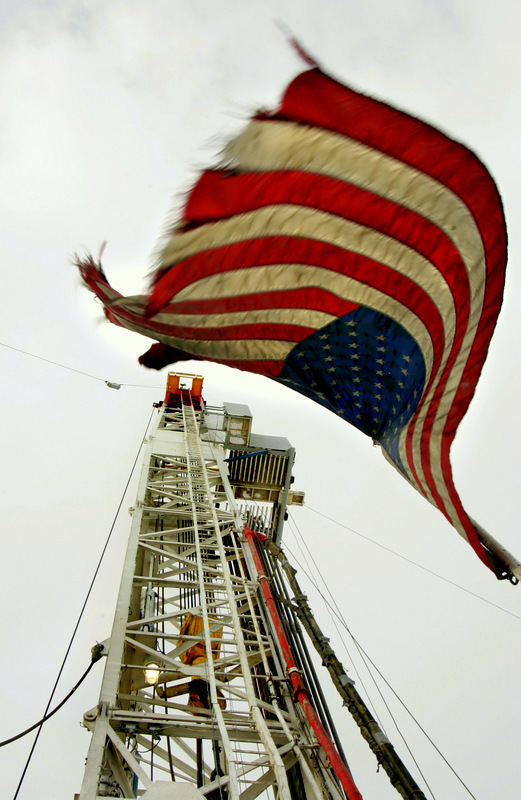
On Thursday, Anadarko Petroleum Corporation and the U.S. Justice Department announced they had reached a $5.15 billion settlement after the company was found guilty of environmental contamination in 22 states and the Navajo Nation, located in Arizona and New Mexico, that required the largest cleanup of hazardous chemicals in the U.S. in decades.
The $5.15 billion settlement is the largest environmental enforcement compensation payout to date, as British oil giant BP only had to pay $4 billion in criminal fines for the 2010 Gulf oil spill.
The settlement relieves Anadarko, one of the largest independent oil companies in the U.S., from all further claims of environmental pollution and contamination. The claims were first brought forth by the U.S. government, 11 state governments, Native American tribes, as well as countless individuals, after it was discovered Kerr-McGee Corp. “fraudulently conveyed assets” during bankruptcy proceedings in order to escape responsibility for the environmental cleanup.
Founded in 1929, Kerr-McGee was a successful energy company that may go down in history as one of the worst environmental polluters in U.S. history. The company was involved in the improper disposal of toxic chemicals for about eight decades. Anadarko assumed control of the company in 2006.
“Kerr-McGee’s businesses all over this country left significant, lasting environmental damage in their wake,” said Deputy Attorney General James Cole. “It tried to shed its responsibility for this environmental damage and stick the United States with the huge cleanup bill. Through a lot of hard work, we uncovered this fraud and recovered over $5 billion dollars for the American people.”
Of the $5.15 billion settlement, $4.4 billion will go toward paying for cleanup efforts in the thousands of sites throughout the U.S. where the hazardous chemicals contaminated the surrounding environment, making this settlement the largest environmental enforcement recovery by the DOJ ever.
For example, Nevada’s Lake Mead is contaminated with rocket fuel created by Kerr-McGee, there are abandoned uranium mines in and around the Navajo Nation that are contaminated with chemical waste, and creosote wood treatment facilities in places such as Manville, New Jersey, remain contaminated with toxic chemicals, as well.
The remaining $750 million from the settlement will be divided among 8,000 individuals who encountered health problems as a direct result of the pollution.
Setting a pro-environment precedent?
Although the Anadarko settlement marked a record-high amount, it is believed the payout would have been even higher had the case gone to court — much to the chagrin of the company that proposed paying just $850 million for cleanup efforts and victim compensation.
Fadel Gheit, a senior oil analyst at Oppenheimer, said the agreement was far below some projections analysts had been making, and said that while the plaintiffs asked for $20.8 billion, they were expected to take home anywhere between $5.2 billion to $14.2 billion.
“They settled on the low end of the range, so that’s why the market was happy with it,” Gheit said while explaining why Anadarko’s stocks didn’t plummet following the announcement.
He added that it was “the lesser of two evils,” prompting some to argue that this settlement sends a message to oil companies they will not be punished to the greatest possible extent.
After all, Al Walker, Anadarko’s chairman and chief executive, released a statement after the settlement not to apologize to the victims or the public for damaging the environment and then trying to not clean-up the mess, but instead to assure investors that investments in the oil company are still sound.
Walker even pointed out that the company will receive a $550 million “tax benefit” as a result of the settlement.
Still, Gheit said the large size of the settlement actually sends a message to companies that pollute the environment that while they can run, they cannot hide from being held responsible for the environmental damages they cause.
Regardless of what the total payout could have been, Navajo tribal leaders applauded the settlement, since some of the roads near the uranium mines are still being used.
David Taylor, an attorney with the Navajo Nation Department of Justice, told Russia Today that after hearing news of the settlement he had a “feeling of just deep appreciation for the Navajo children, who literally are playing in uranium piles today who aren’t going to have to do that in the future.”
Though no one accuses Anadarko of doing the polluting, the company acquired the company responsible for the contamination, Kerr-McGee, in 2006, making Anadarko ultimately responsible for remedying the situation.
“If you are responsible for 85 years of poisoning the earth, then you are responsible for cleaning it up,” said U.S. Attorney Preet Bharara. “That’s why this case was brought. And that’s why the defendants are paying a record $5.15 billion — to fund that colossal cleanup and to make things right.”
She went on to add that while Kerr-McGee and Anadarko tried to “shed its responsibilities” for the environmental damage “by playing a corporate shell game, putting its profitable oil-and-gas business in a new entity and leaving behind a bankrupt shell holding the environmental liabilities of the defunct, polluting lines of business,” the company “will pay to cleanse the land and water” from its toxic legacy.
Cynthia Giles, assistant administrator for the Environmental Protection Agency’s Office of Enforcement and Compliance Assurance, agreed with Bharara and applauded her agency’s efforts to hold Kerr-McGee and Anadarko responsible for the pollution, saying that the “EPA’s vigorous pursuit of this case will have a big return for communities across the country.”
“Companies that pollute can’t escape their responsibility to pay for the cleanup. EPA will continue to fight for those affected by pollution,” she said.
But Giles’ statement is particularly interesting given that many environmentalists have pointed out in recent years that due to U.S. interests in oil and a financially- and personnel-strapped agency, the EPA is often forced to turn a blind-eye to environmental polluters, or in BP’s case, allow them to once again do business with the U.S., usually against the agency’s better judgment.

